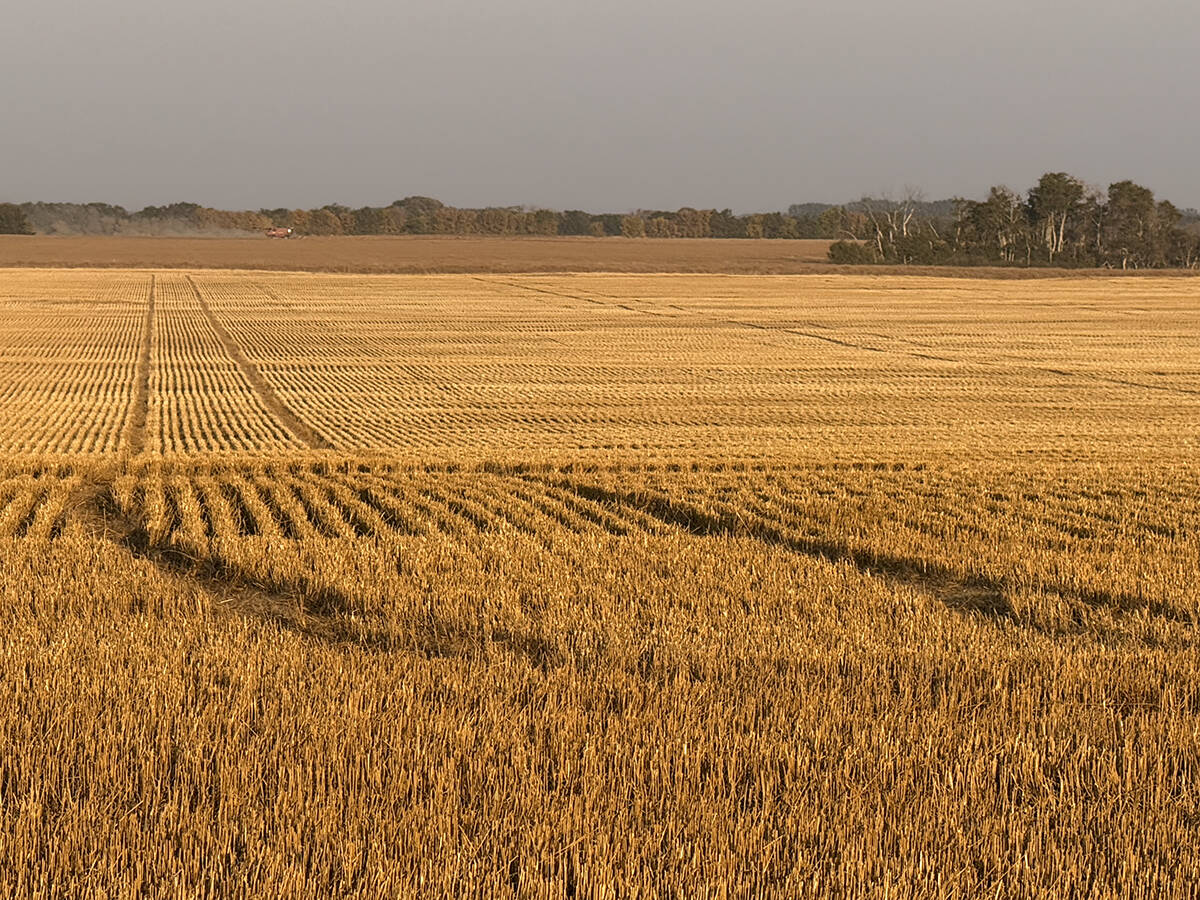SILVER VALLEY, Alta. – An unromantic Christmas gift has been the key to this family’s successful wool business.
Laurie Read wasn’t thinking about award-wining wool when he gave his wife Lianne a bale processor for Christmas, but it has been a lucrative bonus.
“We developed a feeding system I could handle on my own and along with it came clean fleeces,” Lianne said.
“A lot of women think he’s not very romantic.”
With Laurie away for several months shearing sheep, the couple needed a way for Lianne to feed their 600 ewes and still allow enough time to supervise lambing. When sheep eat from a round bale feeder, the hay falls on their backs and necks and bits of hay become embedded in the wool.
Read Also

Final crop reports show strong yields, quality
Crops yielded above average across the Prairies this year, and quality is generally average to above-average.
With the bale processor, the chopped hay is fed in a long line on the ground and the fleece stays clean.
When Lianne entered her first fleece in a wool competition six years ago, the cleanliness of the wool helped her win top prize. Since then she has entered and won several other fleece competitions with her Merino and coloured wool fleeces, including the All Canadian Classic and the Royal Agricultural Winter Fair in Toronto.
“I did all right. I was pretty happy.”
It was after she began winning competitions that Read realized she had something special that judges and spinners were looking for. She now has difficulty keeping up with the demand for her coloured wool.
“For my raw wool I get a fair dollar,” said Lianne, who didn’t want to give out more information about her prices.
Her coloured wool clip is sold either raw, in rovings for spinners or as yarn. The rest is either sold privately or sent to custom mills for further processing before it’s sold to wool shops and spinners.
It’s not only cleanliness the judges look for in a top quality fleece. They also consider the wool’s weight, uniformity, fineness, crimp and luster, which are all qualities the Reads try to breed into their sheep by buying top-quality rams.
“If you’re going to raise sheep, you might as well raise sheep that produce a lot of wool,” she said.
As a spinner, Read has been attracted to the fine wool of the Merino breed and the interesting hues from coloured wool sheep. The corners of her house are filled with bags of wool just back from the mills, long coloured loops of wool and experiments with mixtures.
Some of these experiments have been successful. She quickly sold out of her blend of Merino and angora, as well as a blend of three wools from her flocks.
In the coloured flock are sheep that look like black and white Holstein cattle. She calls them Oreos and their wool is in high demand.
To keep a close watch on their sheep, the Reads moved from pasture lambing to intensive lambing in a pole shed. The flock is divided into three groups: mainly coloured ewes lamb in January and February; Merino and Merino cross ewes lamb in March and younger ewes and replacements lamb in May.
“I want to start selecting to improve my wool more,” she said.
The lambs are moved into a claiming pen once they are born and into a hardening pen a day later. After four to seven days, they’re moved back to the main flock.
The couple is hoping Laurie will soon be able to give up his shearing business to spend more time at the farm or with his custom fencing business. Once he is able to spend more time on the one section farm, they’re hoping they can begin to expand their flock.
“He’s been trying to hang up his shearing gear for a long time, but it’s hard to say no,” Lianne said.














